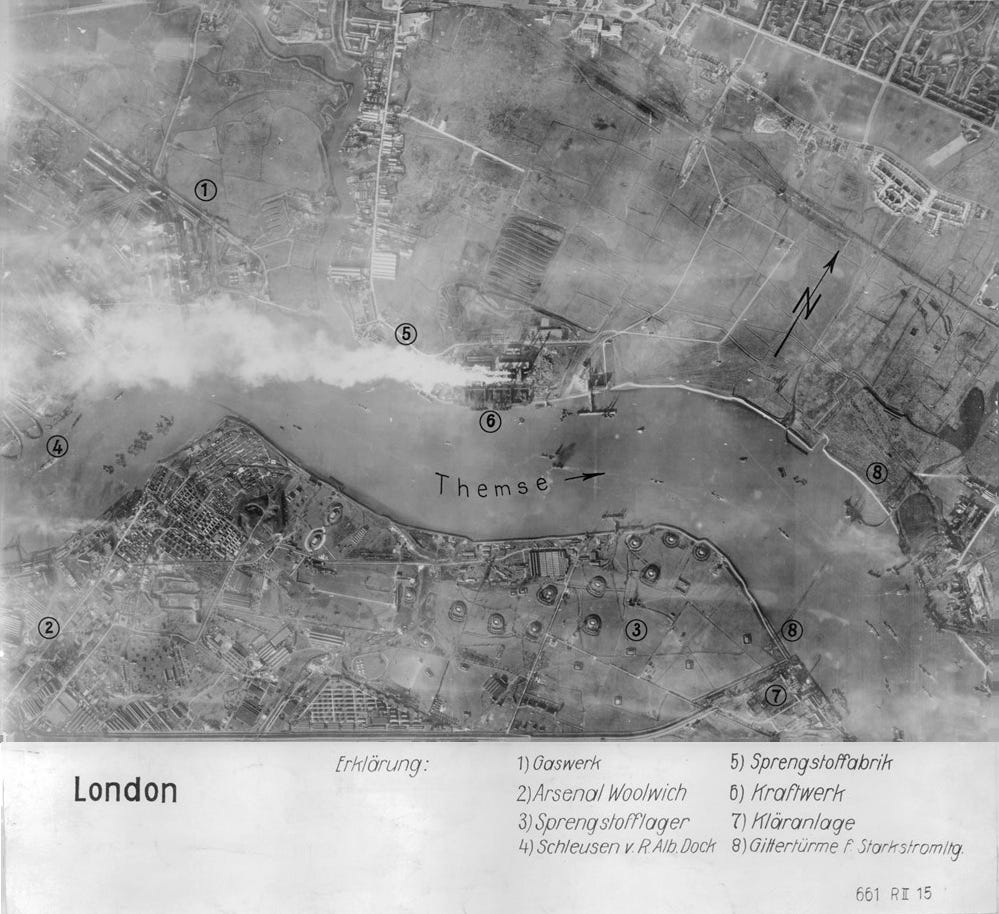Skyrocketing Suicides, the Roar of Jumos and the Danger of Geltungsbedürfnis
Talking to Dr Victoria Taylor about life in the Luftwaffe 1940-41
“…what really stunned me was the fact that suicide rates in the Luftwaffe skyrocketed between mid-September and October 1940.”
Eagle Days primarily focuses on the Luftwaffe’s intensive ten-month air campaign over Britain during 1940-41, which it deemed the ‘Luftschlacht um England’: the ‘Air Battle for England’. In British narratives, we tend to divorce the Battle of Britain and the Blitz rather cleanly from one another. The Germans, on the other hand, considered both the Battle of Britain and the Blitz to come under the same operational banner, as they shared one overarching goal: to directly knock Britain out of the war either politically or militarily, even if their approaches were vastly different.
In addition to following the Luftwaffe’s chronology, Eagle Days fleshes out key moments that are perhaps glossed over by the British – from attacking ‘Channel Sea traffic’ over a week before the British dates for the Battle of Britain, to shedding more light on the ‘fighter-bomber’ phase in the mid-autumn of 1940, which Adolf Galland identifies as a short but notable operational phase in itself. Following German dates offers a more accurate portrayal of how Luftwaffe combat motivation, experience and morale fluctuated across the full ten months – and how this was later to their detriment when it became increasingly overextended in 1941.

Eagle Days is also careful to devote several chapters to the Luftwaffe’s buildup, starting with the exploits of the Condor Legion in the Spanish Civil War and running across various Wehrmacht campaigns up to the summer of 1940. Only by doing this can we fully elucidate how the Luftwaffe felt about taking on the Royal Air Force and why the Luftschlacht um England ultimately unfolded as it did. A couple of post-war chapters are also included to determine how Luftwaffe veterans shaped – and sometimes manipulated – public understandings of the aerial campaign after the Second World War.
In essence, Eagle Days is the first book to offer a focused yet comprehensive history of everyday life in the Luftwaffe (and Nazi Germany) throughout the ten-month campaign. Whilst it follows the typical operational story, the book argues that the Luftwaffe’s true objectives and execution cannot be fully comprehended on a military level if its combat mentality, experiences and morale are not also understood on a more personal level. It is also the first study to question how far the entirety of the Luftwaffe, across both its flying and non-flying arms, bought into the idea of Operation ‘Sea Lion’ – the Wehrmacht’s planned invasion of Britain.
Eagle Days is also unusual in expanding our view of the Luftwaffe in the campaign beyond its elite generals and influential fighter aces to letters written by ranks as low as Flieger (‘Aircraftman 2nd Class’) and Gefreiter (‘Aircraftman 1st Class’). Through adopting this holistic approach across the Luftwaffe’s ranks and roles, Eagle Days endeavours to transform its historical role in the iconic campaign from a cartoonish antagonist to a multidimensional, flawed yet formidable opponent, making it even more remarkable and crucial that the RAF prevailed against it.
Some of the key areas that the book contributes new knowledge to include Anglo-German aviation diplomacy leading up to the Second World War; recruitment and training in the Luftwaffe; the combat experiences of non-flying arms in the Luftwaffe who defended the Reich against British air raids during the campaign; morale among the German public during the Battle of Britain and the Blitz; the political incrimination of the Luftwaffe with regards to Nazi politics; psychological trauma and combat strain in the Luftwaffe during the Luftschlacht um England; and the full extent of preparations made for Operation ‘Sea Lion’, along with how the Luftwaffe and the German army liased on these invasion plans.
Explain the myth of Luftwaffe pilots being 'Knights of the Air'
Keep reading with a 7-day free trial
Subscribe to Hush-Kit Aviation Newsletter to keep reading this post and get 7 days of free access to the full post archives.




